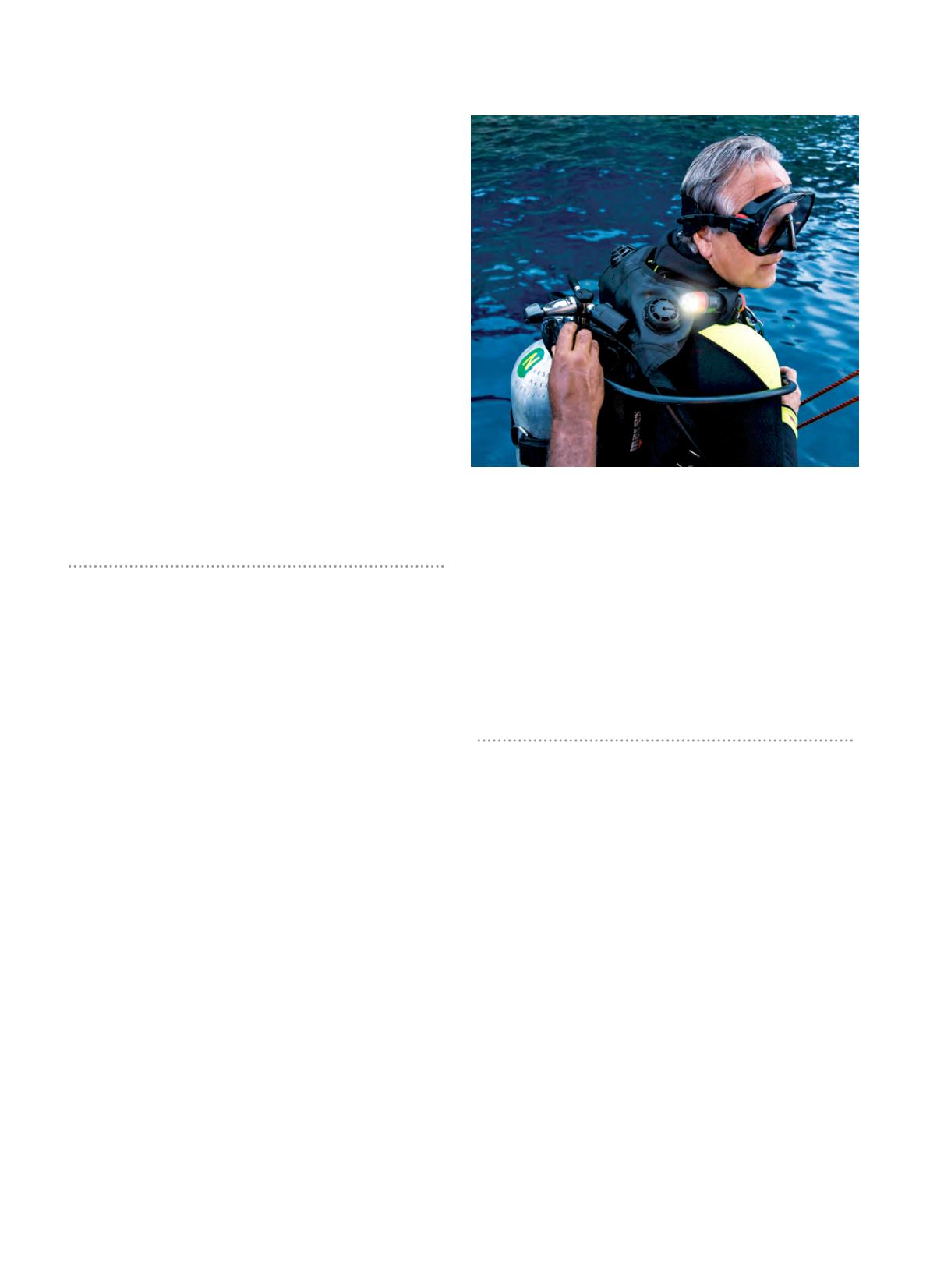
52
|
WINTER 2014
RESEARCH, EDUCATION & MEDICINE
//
E X P E R T O P I N I O N S
regulator. Then we kneeled on the bottom while I
checked his valve and turned it all the way on; he went
back to his own regulator, and we went on to enjoy a
great dive. You just need to keep a cool head. My buddy
had been diving for 30 years and was pretty relaxed
underwater. He was able to breathe slowly, and he
stopped exercising and signaled me.
Gareth Lock:
An open pillar valve may leave the diver
without a gas supply because an inadequately open valve
may deliver insufficient gas for the ambient pressure.
A small opening that provides sufficient gas flow on
the surface may become problematic with increasing
depth due to gas density limiting the flow through the
restriction. Despite the diver’s increased breathing effort
to suck more gas, the flow does not increase and the
diver remains short of breath, accumulating carbon
dioxide (CO2) and, possibly, panicking.
What might cause a valve to be incompletely open?
Lock:
There are several reasons a valve may not be
completely open. These include failure to open the valve
prior to entering the water, which might be a result of
not opening the valve in the first place or an interrupted
equipment check that wasn’t restarted properly. It’s also
possible that the diver opened the valve before he entered
the water and someone closed it in an attempt to be
helpful, thinking he was opening it. Finally, the internal
components of the valve might fail in a closed position.
Buzzacott.
The main cause, in my opinion, is the turning
of a valve back a half turn. Divers and divemasters check
each tank, and there is room for confusion about whether
a tank is a half turn from off or a half turn from on. In
the early days of scuba, valves were made of brass. If you
didn’t turn the knob back a half turn then the valve would
shrink during the dive due to cooling, and you wouldn’t
be able to turn it off afterward. This is not a problem
today, but old habits die hard, and many divers still turn
the valve back half a turn.
Problems may arise when a diver opens a valve fully
and then turns it back a half turn, and then later the same
diver or someone else turns it the other way. Labeling
could help prevent this. Some valve manufacturers label
their valve knobs with a two-ended arrow and the words
“on” and “off” at either end. This is brilliant. You simply
look at the knob, and you immediately know which
way to turn it. Not all manufacturers have done this,
and not all valve knobs turn the same way. We live on
the thin skin of a globe, and while the market may be
global, each region has its idiosyncrasies. In France, for
example, divers commonly dive with Y-valves, and in
other places sidemount units feature left and right valves.
The international diving community should consider a
uniform practice to optimize safety.
What is the best practice to avoid confusion about
whether a valve is open or closed?
Buzzacott:
Always open your tank valve all the way. You
don’t need to turn the knob back a bit anymore; those
days are long gone. Open it up, and breathe easy. Also, a
quick predive check and a buddy check should pick up
any errors. Look at the submersible pressure gauge (SPG),
take a couple of breaths, and if you can breathe and the
needle does not move, you are good to go.
Lock:
First, remember that you don’t have gills and
that you need a gas supply to breathe underwater.
While that might appear to be a trite answer, it means
you have to accept personal responsibility for all your
predive equipment checks and preparation. You are
the one who needs the gas, and therefore you should
be the one to check it. The last time you can check
is after you get off the bench, seat or beach and just
before you enter the water. Before you leave the
kitting-up place, reach back and check that the valve
is open. If you can’t reach it, ask someone else —
preferably your buddy — to physically open the valve
and then back it off a little bit. Breathe the regulator
Ensuring that your tank valve is fully open removes uncertainty about
whether it is open or closed.
STEPHEN FRINK


